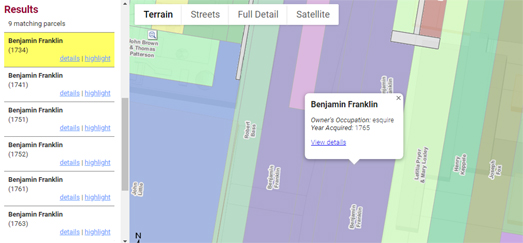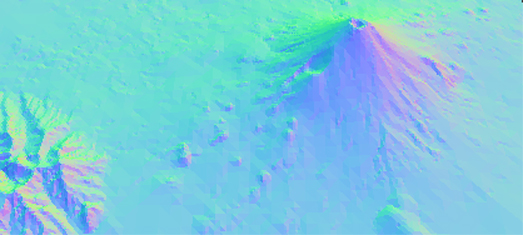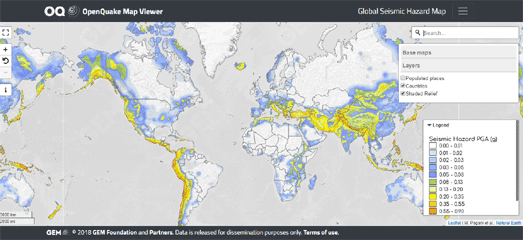
Earlier this month I wrote about
the Birth of Boston interactive map, which uses the historical Clough Land Parcel Map to show Boston's early land parcels and who owned them. Philadelphia has its own historical map of early land owners. The University of Pennsylvania's interactive map,
Mapping West Philadelphia 1777, maps the city's land parcels at the time of the American Revolution and reveals who owned them.
One reason why I find these two maps so fascinating is that they reveal the names of some of each cities' earliest residents. For example if we explore the Northern Liberties neighborhood on Mapping West Philadelphia 1777 we find that three of the neighborhood's biggest land owners were John & Mary Dickinson and William Logan.
John Dickinson was one of the founding fathers of the United States and is also known as the 'Penman of the Revolution'. William Logan was the son of James Logan, the first secretary of the Philadelphia colony (serving under William Penn). In his lifetime James Logan also became mayor of Philadelphia, chief justice of the Pennsylvania Supreme Court, lieutenant governor, and acting governor.
One early citizen that you might have heard of was Benjamin Franklin. On the map you can find nine land parcels registered to Franklin. These include what is now known as
Franklin Court, on Market Street. This is where Franklin built a house and print shop. Both were demolished in 1812.

The map can also be used in conjunction with other historical sources. For example we can use the Free Library of Philadelphia's Digital Collections to view pictures of these land parcels around the time of this map. For example the picture above shows the
Charles Norris Mansion, on Chestnut Street, between Fourth and Fifth. If we refer back to the map we can see that Charles Norris owned nearly half of that whole block.

This picture shows
the house of Dr. William Shippen, at 4th & Locust Streets. This land parcel on the Mapping West Philadelphia 1777 interactive map is registered to William Shippen, a practitioner in physick.
If you want to carry out your own research into early Philadelphians then you could search the map for properties owned by the descendants of
William Penn. Another interesting area of research would be to explore the influence of the Quakers and the Society of Friends in early Philadelphia.


















































